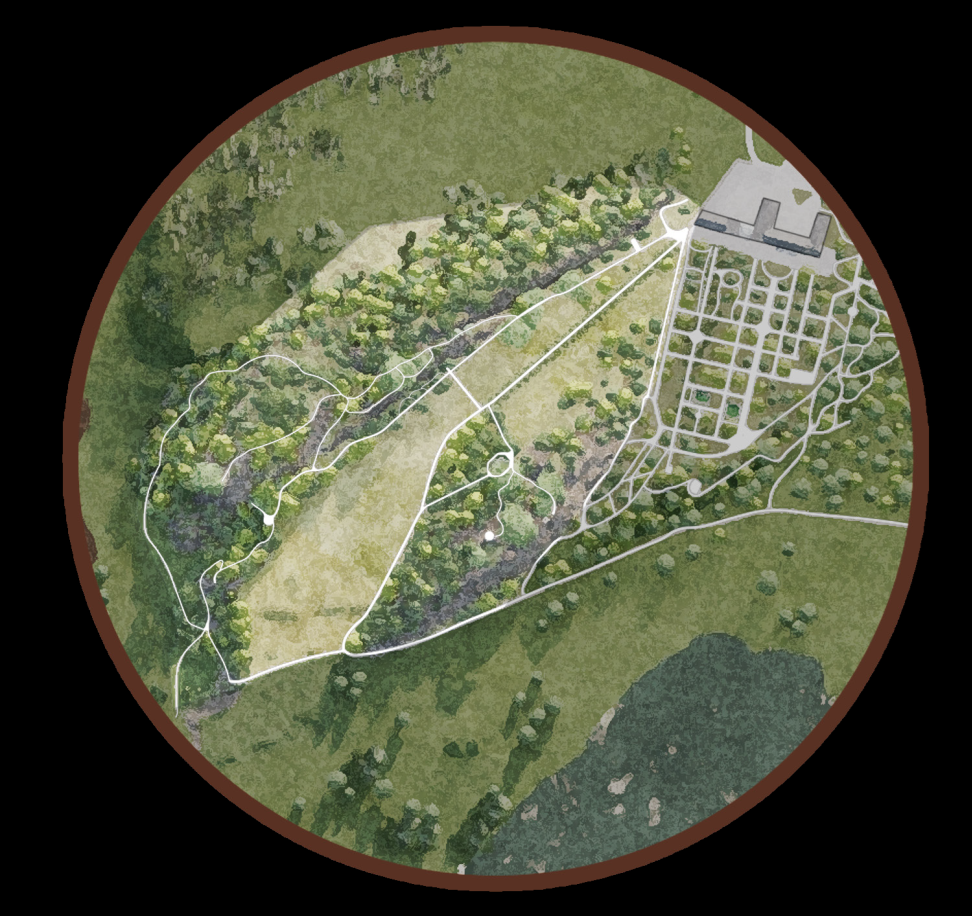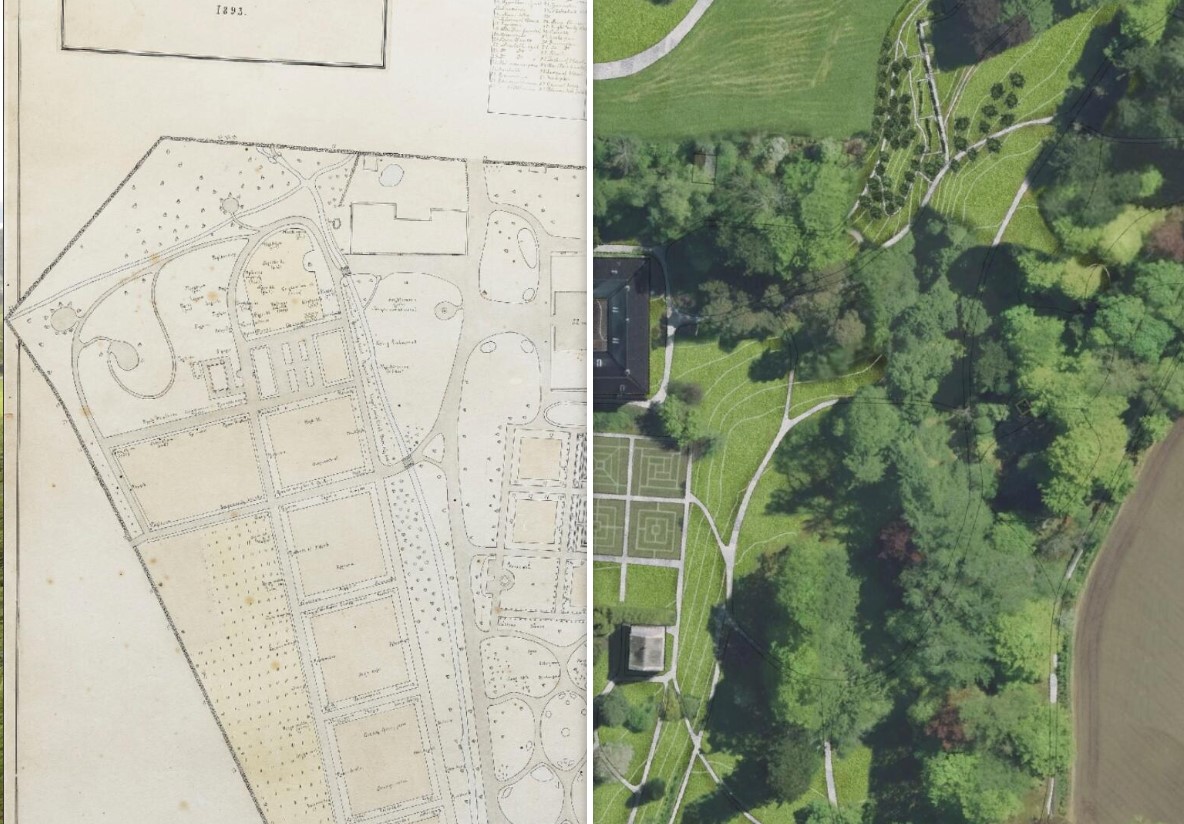Authors: Annegreth Dietze-Schirdewahn, Ramzi Hassan, Lei Gao
This blog article presents an innovative approach that combines historical archival research with digital technologies in landscape architecture education. During the autumn semesters in 2020 and 2022, the Theory and History Research Group and the Virtual Reality Laboratory (VR-Lab) at the School of Landscape Architecture, NMBU, collaborated in the newly launched master’s course ‘3D visualization of historical landscapes’. The focus of this course is the utilization of the latest digital media and visual technologies in combination with historical records from landscape architecture archives. This new method of teaching has made the history studies more engaging and relevant to our own discipline of landscape architecture.

Drone Photograph of the Barony Rosendal by VR-Lab NMBU
In the course, a historical site was chosen for a case study. In 2020, it was the historical park of Barony Rosendal on the west coast of Norway, and in 2022 the historical park of Rød in Halden to the southeast of Oslo and near the border of Sweden.

Locations of Rosendal and Rød in Norway
Students developed their understandings of the cases through lectures, archival studies and excursions, as well as self-study using the internet and library resources, and learning from each other through group presentations. For the assignments, students were asked to develop digital models to present their historical study results and plans for future scenarios. The outcomes are accessible through the following links. Six groups of students worked with the case Barony Rosendal, and four with the case Rød:

The digital model combines historical photographs and maps with the current situation in the field (Source: digital model of Rød)

Historical path system at Rød visualized in the digital model (Source: digital model of Rød)
This way of teaching creates a high level of interaction and increased engagement with students. Students used primary sources from the archives to build their own interpretations of the historical landscapes; they were free to choose which parts of the parks and which historical layers they would like to focus on; they were equipped with up-to-date digital tools, which allowed them to better visualise and interact with their conservation scenarios. Through the course, the students understood that history is not static but an ever-changing and fluid process; by adopting digital tools and archival research methods, students breathed life into history. All works exhibited on the digital platform are student narratives of the histories and futures of the sites. Here, students are no longer passive recipients, but active creators of history.

Archival records in combination with current photographs (Source: digital model Barony Rosendal)

Animations make diffent historical layers visible (Source: digital model Barony Rosendal)

Students interpretation of the Park of Barony Rosendal. The new design embeds different historical layers based on archival studies (Source: digital model Barony Rosendal)
The students learned the potentials of digital media and visual technologies to communicate the history of gardens and parks. Digital platforms can act as a medium for preservation, documentation, interpretation, communication, and intervention in historical landscapes. It contributes to research and education and raises awareness of the value of historic landscapes. The results of our course suggest that digital media and visual technologies, including VR applications, are transformative technologies that can positively impact on the learning of landscape history by stimulating imagination, creativity, critical thinking, and perspective.
Parts of this article were presented at the conference: Future History: Teaching History in Landscape Schools, Sheffield 08.- 09.09.2022
For further questions:
Ramzi.hassan (at) nmbu.no
Annegreth.dietze (at) nmbu.no
